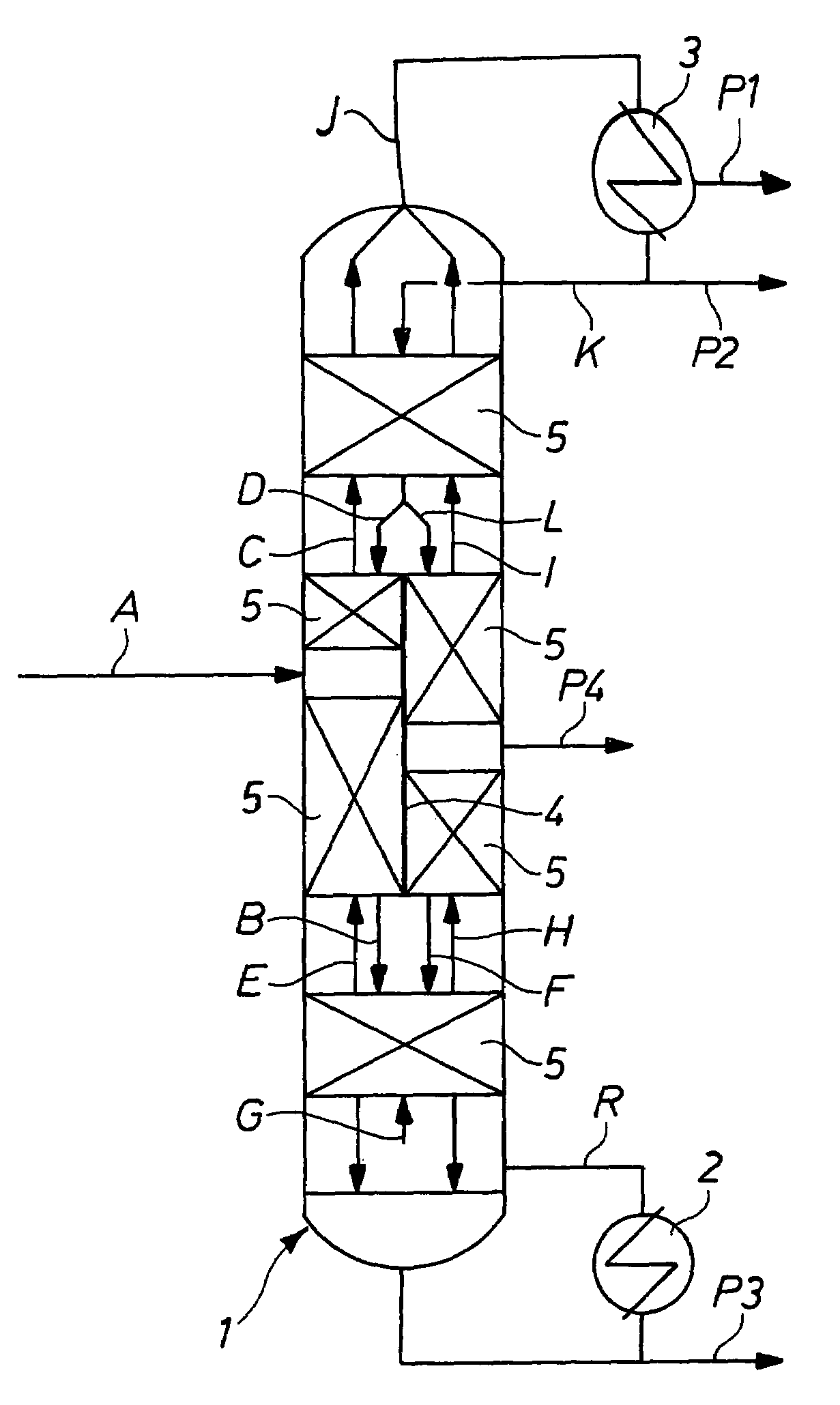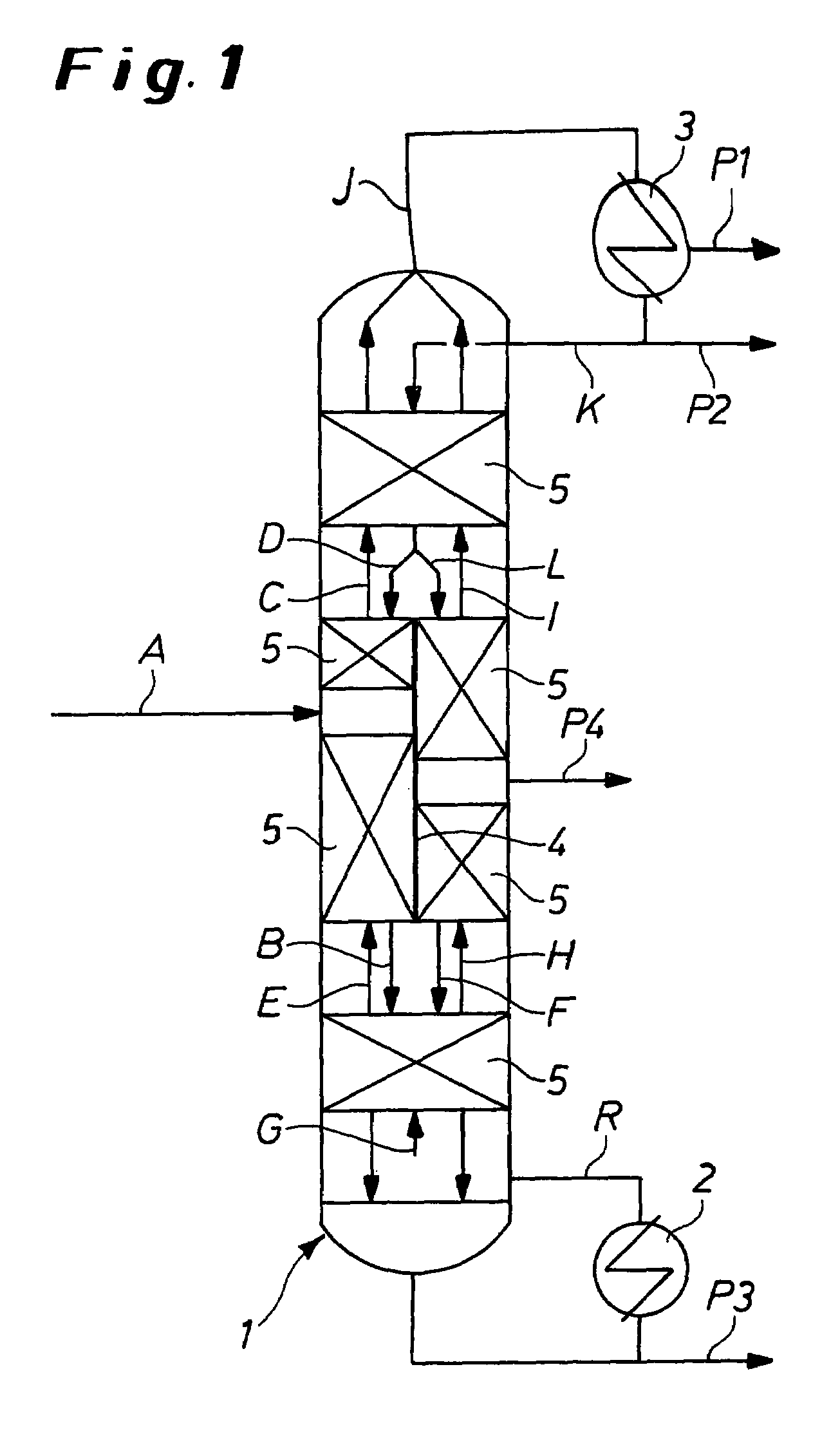Process for the purification of toluene diisocyanate incorporating a dividing-wall distillation column for the final purification
a technology of toluene diisocyanate and distillation column, which is applied in the direction of isocyanic acid derivatives purification/separation, separation process, isocyanic acid derivative preparation, etc., can solve the problems of affecting the yield of tdi, higher rate of residue formation, and limited process, so as to improve tdi purity, improve tdi purity, and reduce energy requirements and investment costs
- Summary
- Abstract
- Description
- Claims
- Application Information
AI Technical Summary
Benefits of technology
Problems solved by technology
Method used
Image
Examples
Embodiment Construction
[0013]The present invention relates to a process in which toluene diamine is reacted with phosgene in the presence of a solvent in the liquid phase or to a process in which toluene diamine is reacted with phosgene directly in the gas phase with a solvent used in the quench cooling of said reaction. Excess phosgene is then partially or completely removed from the resulting reaction mixture and the de-phosgenated crude distillation feed is fed to a fractionation process in which the solvent and, optionally, the residue is (are) removed. The subsequent crude TDI feed is fed to a divided-wall distillation column in which four fractions are recovered:
[0014]1) a vapor phase low-boiler and solvent enriched product from which the condensable species are preferably recovered and returned to the de-phosgenation, residue removal, or solvent removal process;
[0015]2) a low-boiler enriched product which is then preferably returned to the de-phosgenation, residue removal, or solvent removal proces...
PUM
| Property | Measurement | Unit |
|---|---|---|
| Percent by mass | aaaaa | aaaaa |
| Percent by mass | aaaaa | aaaaa |
| Percent by mass | aaaaa | aaaaa |
Abstract
Description
Claims
Application Information
 Login to View More
Login to View More - R&D
- Intellectual Property
- Life Sciences
- Materials
- Tech Scout
- Unparalleled Data Quality
- Higher Quality Content
- 60% Fewer Hallucinations
Browse by: Latest US Patents, China's latest patents, Technical Efficacy Thesaurus, Application Domain, Technology Topic, Popular Technical Reports.
© 2025 PatSnap. All rights reserved.Legal|Privacy policy|Modern Slavery Act Transparency Statement|Sitemap|About US| Contact US: help@patsnap.com


